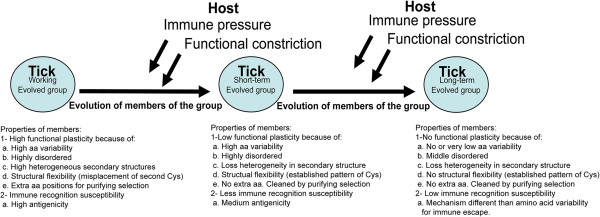Figure 7.

Proposed mechanism for target-oriented evolution. We infer from this model that aa variability, structural changes and protein disorder may have different purposes in what we label as working, short-term and long-term evolved groups of tick salivary Kunitz peptides. For working evolved groups we propose that they possess high functional plasticity, but are highly susceptible to immune recognition. In short-term evolved groups they possess low functional plasticity and less immune recognition susceptibility. Long-term evolved groups have extremely low functional plasticity and possess low immune recognition susceptibility and may possess immune escape mechanisms other than antigenic variability.
